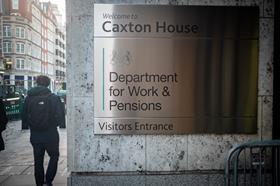The Financial Conduct Authority (FCA) is planning to issue a further consultation later this year on a single Value for Money framework to cover the whole defined contribution (DC) sector.
The work is being carried out in conjunction with the Pensions Regulator and the Department for Work and Pensions.
Pete Cottingham, senior associate for institutional investment policy at the FCA, said the consultation would set out the regulator’s developed thinking based on its initial consultation that closed in 2024.
“We are working very closely together on this, and we envisage a single framework across the entire DC landscape,” said Cottingham, speaking on a Society of Pension Professionals webinar last week.
“We are working very closely together on this, and we envisage a single framework across the entire DC landscape.”
Pete Cottingham, FCA
Emphasising the need for a singular framework, Cottingham said information must be “comparable” to help savers best determine the value of their pension schemes against others. Moving the conversation on from simply focusing on cost, he explained the need to take into account multiple factors such as investment returns over appropriate timeframes, quality of service provided and levels of risk.
“Taking an overall view to achieve better aims to achieve better, safer outcomes, by encouraging or requiring, where need be, improvements in arrangements deemed poor value,” added Cottingham. “And where improvement is not considered possible over an appropriate time period, the framework would, in most cases, see arrangements removed from the market.”
According to the pensions reform “roadmap” published by the government earlier this year, it expects the Value for Money (VfM) framework to be in place by the 2026-27 financial year, with the first data publication and assessments scheduled for the second half of 2028.

“Value for Money: The objective of the value for money framework is to enable a shift in focus from cost towards value amongst employers, trustees and managers of workplace pension schemes. By encouraging a holistic view of value (assessing investment, costs and services), the framework aims to improve outcomes for pension savers through a potential improvement in performance (where achievable) or removal (where not possible) of poor performing pension schemes /arrangements from the market.”
- from the DWP’s document ‘Workplace pensions: a roadmap’, published in June 2025.
Cottingham also touched upon the topic of small pots, which the FCA has been increasingly looking at, acknowledging the likelihood of further regulations and a potential for “automatic consolidation”.
Fellow panellist Dale Critchley, policy manager for workplace saving at Aviva, flagged the importance of the scale test to DC reform, with the government seeking to have DC providers achieve a minimum size of £25bn for default arrangements. Critchley indicated that multi-employer pension schemes have around £700bn in assets, with more than three quarters of this total held by the top seven providers.
“This will be an absolute imperative,” said Critchley, who, with some “cautious” assumptions around organic growth, expects there to be 10 to 12 providers in 2035 capable of meeting the £25bn scale test. However, he warned that the consolidation of pension assets in parallel to regulatory benchmarking could cause issues.
“In Australia, investments in each asset class need to meet a benchmark including property,” said Critchley. “But the returns in social housing are nowhere near that of commercial property, so no one invests in the former.
“It’s those unintended consequences of defining benchmarks that need to be avoided, as the benchmarks themselves can also generate herding.”






















